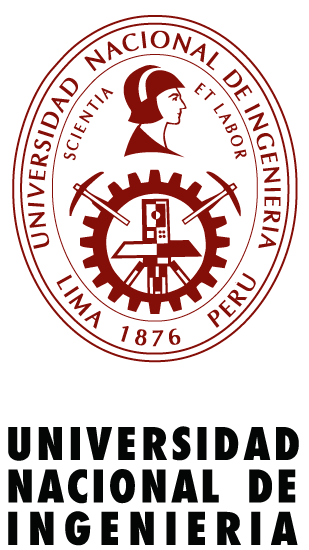Please use this identifier to cite or link to this item:
http://hdl.handle.net/20.500.14076/27701| Title: | Producción de películas delgadas de materiales piezoeléctricos PZT por técnica de RF magnetrón Sputtering y caracterización ferroeléctrica y estructural |
| Authors: | Cárdenas Achulli, Brayan |
| Advisors: | Talledo Coronado, Arturo Fernando |
| Keywords: | Películas delgadas;PZT |
| Issue Date: | 2022 |
| Publisher: | Universidad Nacional de Ingeniería |
| Abstract: | Se depositaron películas delgadas de Titanato Circonato de Plomo, comúnmente conocido como PZT, sobre un sustrato de TiN/Ti/Si y Si. EL sustrato TiN/Ti fue depositado primero sobre sustrato de silicio Si; se utilizó el Ti entre el TiN y Si para mayor adherencia. El primer paso fue depositar películas delgadas de PZT sobre el sustrato de Si y TiN/Ti/si para luego llevarlas a un tratamiento térmico. Con el fin de promover la fase perovskita se barrió un rango de temperatura en la fase de deposición entre 100-500 ℃, este proceso fue monitoreado a través de espectros de difracción de Rayos X de la muestra estudiada. Se observo que para temperaturas en el rango de 300-500℃ se tiene únicamente la fase Pyrocloro; esta fase está caracterizada por la deficiencia de oxígeno y un exceso de plomo. Para conseguir la fase del titano circonato de plomo PZT se requiere hacer un tratamiento térmico post deposición a temperaturas mayores a 600℃; este tratamiento fue llevado a cabo en un horno resistivo a medio ambiente el cual permitió obtener la fase PZT. Los experimentos mostraron que la temperatura de tratamiento térmico óptima para sintetizar películas delgadas de PZT fue de 600℃ durante tres horas. Así mismo, con el fin de optimizar las películas delgadas de PZT se hizo un análisis para diferentes condiciones de deposición como: diferentes potencias de descarga y presión de trabajo; se encontró que los valores óptimos de estos dos parámetros de deposición son 80 W y 6 sccm, respectivamente. Además, se hizo un análisis ferroeléctrico de las películas de PZT a través de una estación de tipo Sawer-Tower en el rango de frecuencias y voltajes de; 3.2 Hz-8 kHz y 5-22.5V, respectivamente. El análisis ferroeléctrico de las películas de PZT muestras curvas de histéresis característicos del PZT. Thin films of Lead Zirconate Titanate, commonly known as PZT, were deposited on a TiN/Ti/Si and Si substrate. The TiN/Ti substrate was first deposited on a silicon Si substrate; Ti was used between TiN and Si for greater adherence. The first step was to deposit PZT thin films on the Si and TiN/Ti/Si substrate and then heat treat them. In order to promote the perovskite phase, a temperature range was swept in the deposition phase between 100 and 500 ℃, this process was monitored through X-ray diffraction spectra of the studied sample. It was observed that for temperatures in the range of 300 and 500 ℃ there is only the pyrochloro phase; this phase is characterized by oxygen deficiency and excess lead. To achieve the PZT lead titan zirconate phase, a post-deposition heat treatment at temperatures greater than 600 ℃ was required; This treatment was carried out in a resistive furnace at ambient temperature, which allowed obtaining the PZT phase. The experiments showed that the optimum heat treatment temperature for synthesizing PZT thin films was 600℃ for three hours. Likewise, in order to optimize the PZT thin films, an analysis was made for different deposition conditions such as different discharge powers and working pressure; the optimal values of these two deposition parameters were found to be 80 W and 6 sccm, respectively. In addition, a ferroelectric analysis of the PZT films was made through a Sawer-Tower type station in the range of frequencies and voltages of 3.2 Hz and 8 kHz, and 5-22.5 V, respectively. Ferroelectric analysis of PZT films shows characteristic hysteresis curves for PZT. |
| URI: | http://hdl.handle.net/20.500.14076/27701 |
| Rights: | info:eu-repo/semantics/openAccess |
| Appears in Collections: | Maestría |
Files in This Item:
| File | Description | Size | Format | |
|---|---|---|---|---|
| cardenas_ab.pdf | 3,97 MB | Adobe PDF | View/Open | |
| cardenas_ab(acta).pdf | 806,85 kB | Adobe PDF | View/Open | |
| carta_de_autorización.pdf | 610,42 kB | Adobe PDF | View/Open | |
| informe_de_similitud.pdf | 1,41 MB | Adobe PDF | View/Open |
This item is licensed under a Creative Commons License

Indexado por:



